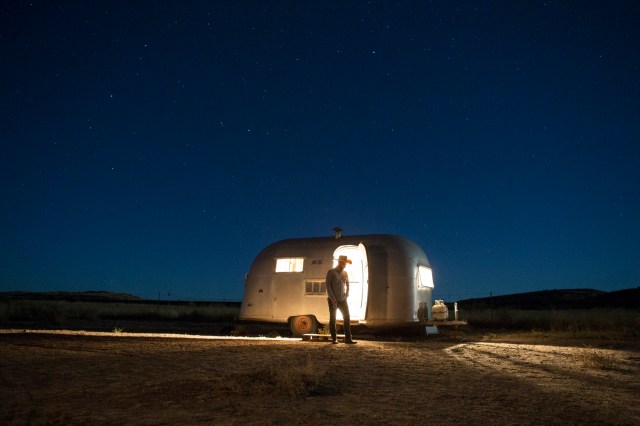Could tiny houses on wheels be the answer to the housing crisis?

The housing crisis is a crisis of affordability. And why aren’t houses of affordable? Not because we’re poorer than we used to be, but because houses are more expensive than they used to be. Much more expensive.
In a sane world we’d call this inflation. In fact, it is inflation – and to which there are two solutions: increase supply and/or reduce demand.
Policy makers mostly ignore the demand-side, focusing on supply – i.e. how can we build more houses?
Clearly, we need to remove the main constraints – of which three are the most fundamental, applying not only to housing, but to just about anything.
Firstly, resistance. A lot of people don’t want new housing near their own homes – and their unhappiness generates political pressure against new development. Solution: beautiful houses so that development makes places better not worse.
Secondly, time. There’s never enough of it, is there? In Britain, we still basically build houses by hand – and that’s a lengthy process. Solution: factory-built houses, using advanced onsite and offsite fabrication technologies to speed up the process of construction.
Thirdly, space. Always at a premium where people most want to live, this is the tightest constraint on building new homes. Solution: ‘tiny houses’ so that we can have more of them on any available site.
This last one is the subject of an insightful piece by Vauhini Vara for the Believer:
“Modest homes have existed for as long as people have sought shelter, but the tiny house—typically defined as a dwelling of 399 square feet or less, often built on a trailer, that functions as a miniature version of a regular house—is supposed to represent a deliberate design choice. The version of tiny living that is glamorized on TV and that appears in curated Instagram accounts features images of young, yogic, flannel-wearing couples lazing about in delicious little spaces. “
As well as the cutesiness of the designer tiny house, there are other, more substantial, attractions. With ever increasing numbers of us living alone or as couples without children, family-sized homes seem like a waste of space – not to mention a waste of other resources like energy. Smaller dwellings mean that more people can live in sought-after areas such as city centres or rural beauty spots, where much of life is lived outdoors not in. In urban settings, tiny homes lend themselves to modular forms of construction and can make use of every sliver of land; while in rural settings, the 21st-century version of the log-cabin treads lightly on the landscape. Finally, what better reason could there be to de-clutter your life and make Marie Kondo proud?
So are tiny houses the big solution? Writing from an American perspective, Vara sounds a distinct note of caution. As well as being limited in size, these homes are also limited in number:
“…the most surprising aspect of the tiny-house phenomenon might be that, while the lifestyle has never been more visible, real-life tiny-house dwellers are hard to find. Fewer than ten thousand of the homes are estimated to exist nationwide. “
Note that this doesn’t include the vastly greater number of trailer park homes dotted across the US, but then, as the author points out, the tiny house movement seeks to present modest living as a positive choice. The irony is that to get round regulations “builders have taken to putting tiny houses on wheels and building them to the less restrictive codes that apply to RVs [recreational vehicles]”.
Then there’s the issue of land, which complicates the idea of tiny homes as a solution to the affordability problem:
“The median price of a home in the US is $220,000, which most people finance with a mortgage. Tiny homes usually sell for $40,000 to $90,000 without land, and buyers typically pay cash or finance them with a property loan.”
That’s great for people who want to own their homes, but have limited access to capital. However, they also need to rent or buy the land on which their homes are built or parked on. Where land is cheap that ought not to present too much of a challenge. But where land is expensive (and thus where, by definition, the housing crisis is at its most acute) construction costs are not the main cost. Squeezing more dwellings onto a particular parcel of land – by building up or building small – only increases the number of possible tenants / owner occupiers / investors and thus the commercial value of the land.
In other words, we’re back to the demand-side of the housing crisis.
Tiny homes, prefabricated homes, beautiful homes – all have their benefits, but the fundamental issue isn’t what we build, but what we build it on (and how much it costs).
By the way, the rival ‘disaster capitalist’ solution to the housing crisis, which is to embrace sprawl and ugliness plus unregulated finance, will also fail – and for exactly the same reason.
Until policy makers deal with what is quite literally the underlying problem – land prices and the mechanisms by which they’re inflated, there will be no lasting solutions.
Every other initiative, no matter how laudable, is a distraction.










Join the discussion
Join like minded readers that support our journalism by becoming a paid subscriber
To join the discussion in the comments, become a paid subscriber.
Join like minded readers that support our journalism, read unlimited articles and enjoy other subscriber-only benefits.
Subscribe